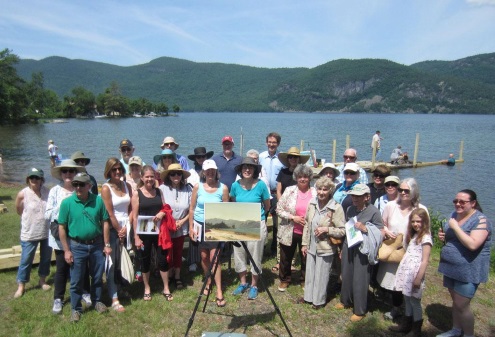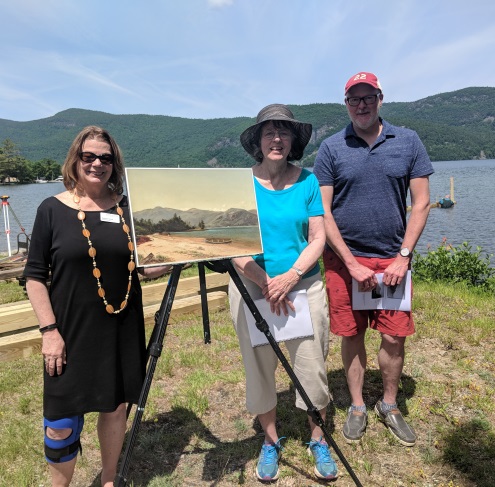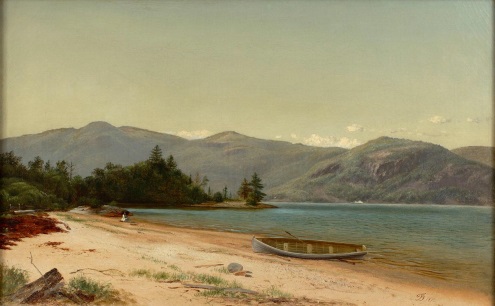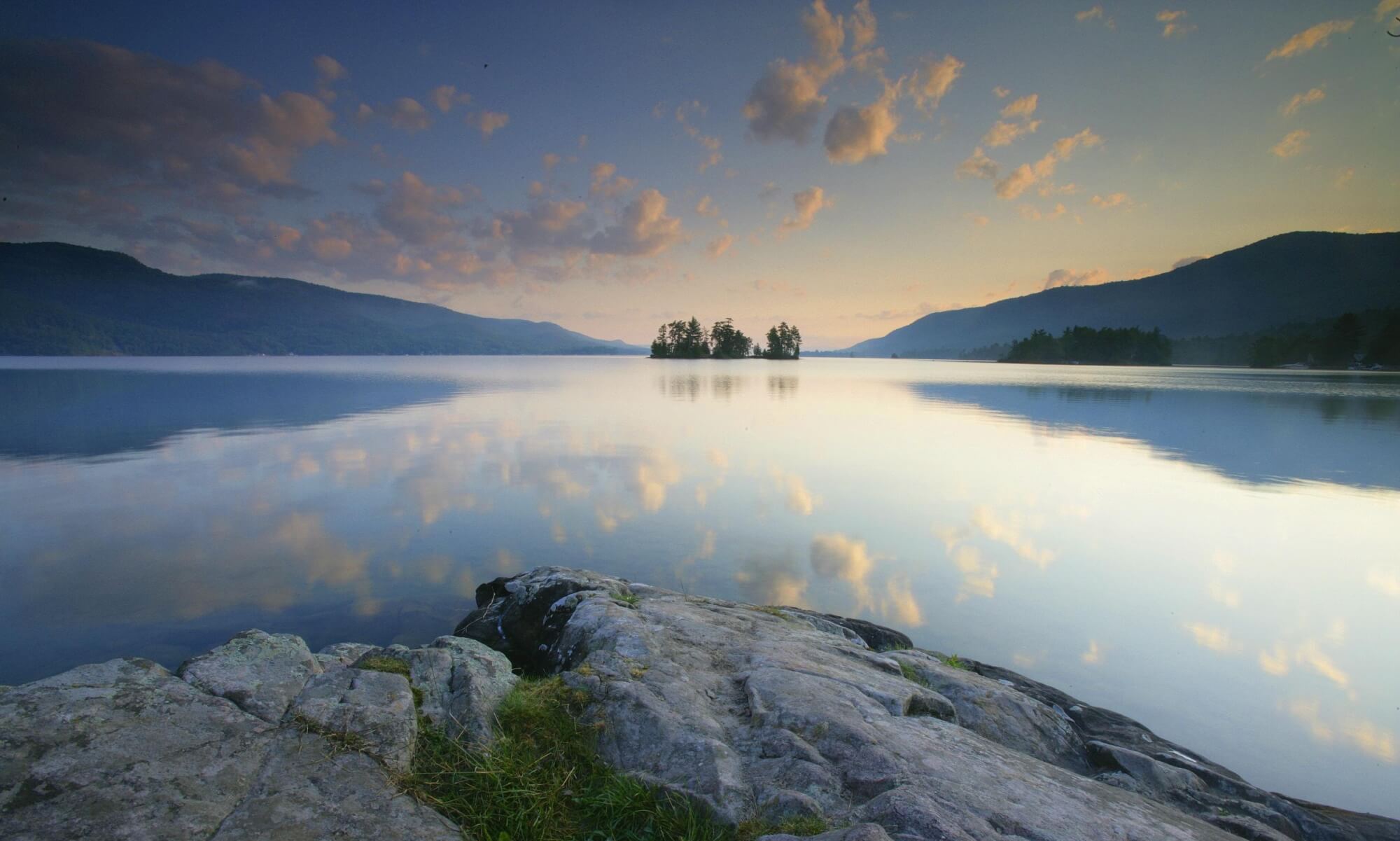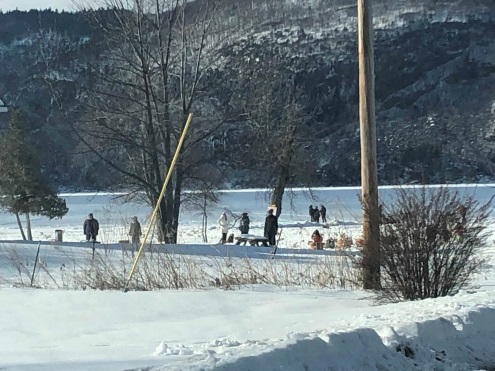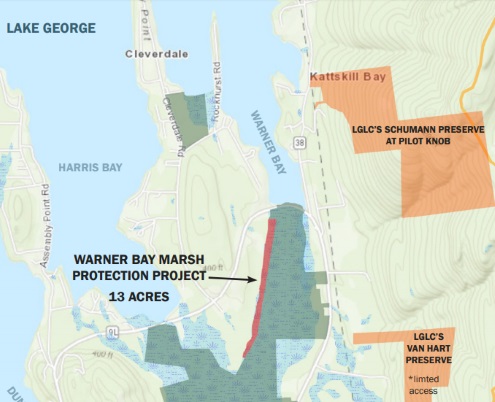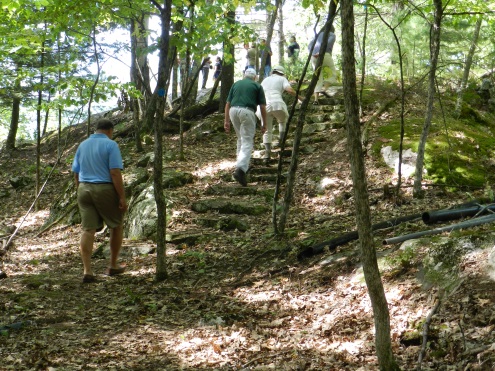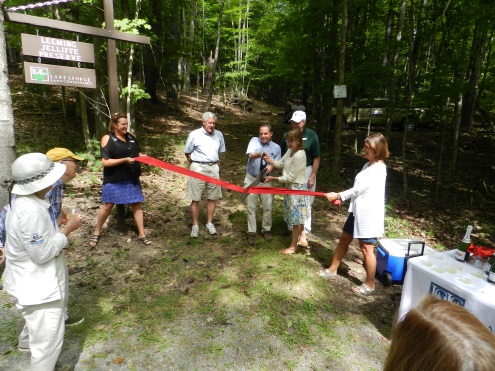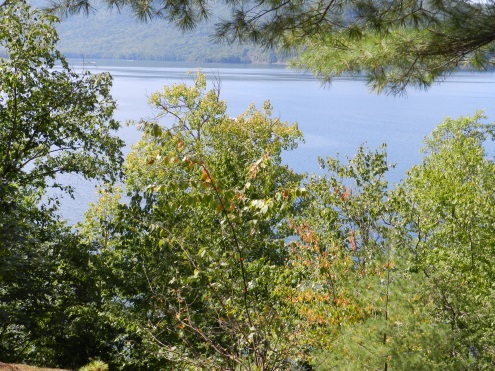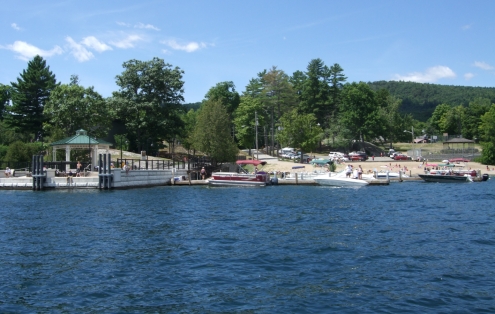The Lake George Association is nearing completion of a major project at the Gull Bay Beach, north of Huletts Landing. The following is reprinted with permission from the Lake George Association’s Newsletter.
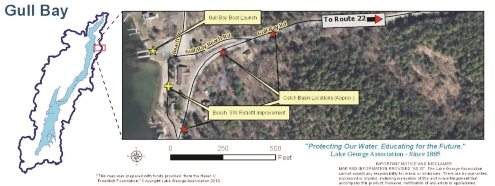
The area where the work was done can be seen on the above map. (Click all images to see larger scale.)
Multiple Problems Call For
Multiple Solutions In Gull Bay
When we say that the Lake George Association puts a lot into protecting Lake George, sometimes that actually involves taking things out of Lake George.
In this case, taking things out allowed better access around the boat launch and docks in Gull Bay, and removed material that could contain nutrients that feed algae or harbor invasive species. And what was actually taken out of Lake George was about 45 cubic yards of sediment (about 4.5 dump truck loads) from around the docks.
All that work leads to one of the most important benefits of the project: Preventing thousands of gallons of untreated stormwater from running into Lake George. Untreated stormwater is by far the greatest human contributor to water quality decline in Lake George.
Each step of this long-term project represents a piece of protection, and together they will help to slow runoff and protect Lake George water quality now and for the future. Just like the LGA has been doing for more than 133 years.
The sediment removal was the middle step of a long-term project undertaken by the LGA and the Town of Putnam.
The step required a few years of planning and preparation to ensure the permits were properly acquired and the work had long-lasting effects.
Back to the Beginning
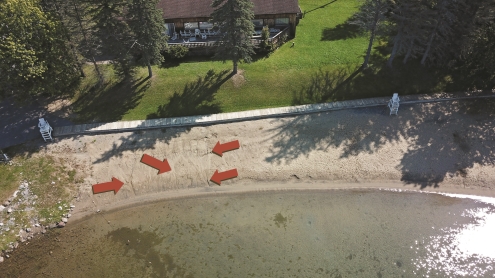
The Gull Bay Beach shown in 2017. After just one rainstorm, the channels from rain water runoff can be seen clearly.
Going back to the beginning, what had become painfully clear over the last few years in Gull Bay was that the stormwater runoff was decreasing the ability for anyone to use the Town of Putnam’s boat launch because of how shallow the water had become.
Stormwater runoff containing nutrients combined with the natural siltation process and eroded material from the beach and nearby streams filled in the area all around the docks and boat ramp.
The first step in solving the stormwater runoff problem (thereby protecting water quality) and in providing better access was to slow or stop the stormwater runoff from getting into the Lake from areas upland and upstream.
A Year of Planning to Stop Stormwater
In late fall 2017 (after nearly a year of planning), LGA Project Manager Randy Rath and Putnam Highway Superintendent Gary Treadway worked with Morrissey Construction to replace a 200-foot non-functional stormwater catchment across the top of the entire beach on Gull Bay.
Originally installed in 1996, the stone-filled trench with a 6” drain pipe inside (to capture stormwater and channel it away from the beach and stop erosion) had become fully plugged with sediment from the runoff and needed to be replaced and restored to working condition.
The project was performed in late fall because that was the most efficient time and most efficient way to ensure it was done to support lake protection.
Collaboratively, the three organizations worked over the course of a few days to safely dig up and remove the non-operational drain (after removing the boardwalk that covered it) and installed a new pipe and stone into the new drain area the next week.
The drain was checked during and after storms to ensure it was functioning properly and capturing the stormwater effectively.
Since the drain was replaced, excess runoff from the beach into the Lake has stopped, protecting the water quality and slowing the growth of the access issue at the docks. The replacement should function for twenty years or more, like the last one.
A new boardwalk was built in early 2018 to cover and protect the structure. The work was completed at a cost to the LGA of $3,200 and hours of work from LGA staff. The Town of Putnam Highway Department offered in-kind assistance with equipment and personnel. The money for the project came from LGA members and a Water Quality Improvement Project grant through the Champlain Watershed Improvement Coalition of NY.
Restoring Access to Docks
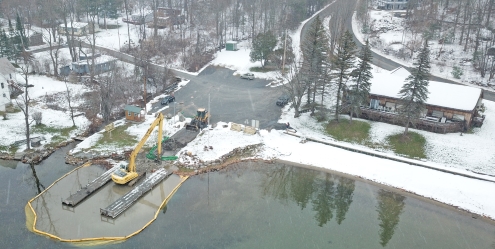
Years of runoff created a problem for boaters. The LGA dredged years of accumulated sediment from around the docks by the beach.
The second action toward solving the access and water quality issue was the more noticeable and ambitious one: to dredge the accumulated sediment from around the dock, and conversely fill in the trench that had formed at the end of the launch with material that wouldn’t wash away and create another problem.
Treadway and Putnam Supervisor John LaPointe asked Rath for help getting permitting and moving forward with the project, knowing the Lake George Association had authored the documents on safely dredging in Lake George approved by the DEC in 2004, and the Final Supplemental Environmental Impact Statement, approved by the DEC in 2014. The statements determine how dredging can be done in Lake George so as to minimize the potential for adverse impacts immediately and over the long term.
The LGA paid about $3,000 to bring in the equipment used to dredge around the docks as well as materials to repair the launch area and staff time for the permitting and the oversight of the project. The Town’s investment totaled nearly $7,600 including staff time, materials and equipment.
The project required silt curtains to be installed in the Lake during the course of the project to prevent suspended sediment from floating away during the dredging.
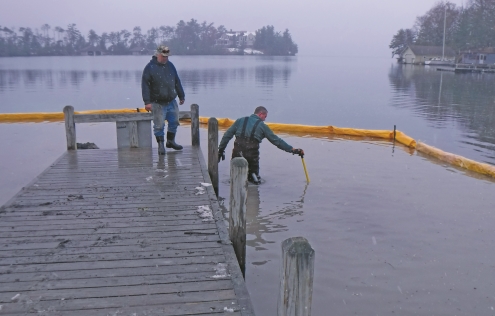
The depth of the lake was returned to its natural state near the beach’s two docks.
Those silt curtains came from the Warren County Soil and Water Conservation District and the contractor (Adirondack Waste Management).The curtains were returned at the end of the project.
The Town of Putnam removed the 45 cubic yards of sediment and restored the site. The material was taken back to the Town’s highway garage to be reused on other projects, according to the permit. Work was done in late fall to provide access to boaters and not disturb a thriving benthic environment.
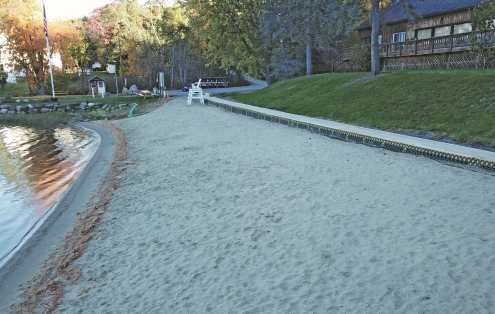
The completed project on the Gull Bay Beach with the new baordwalk installed, and no evidence of runoff.
Last Step Happens in Spring
The third action will come this spring.
After collaborating with the Town about what needs still have to be met, the Lake George Association will spend $3,000 to purchase three small catch basins, similar to what the LGA and Washington County Department of Public Works installed on Route 6 in Huletts Landing, a winding road that leads from the Lake shore to Route 22 on the west side of the Lake.
The three catch basins will be installed by Putnam Town Highway crews on Gull Bay Road to further capture stormwater and keep it from carrying pollutants, nutrients, salt and sand into Lake George.
